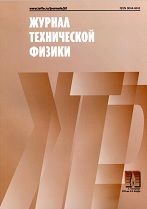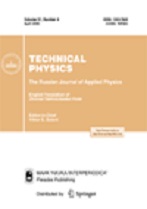|
This article is cited in 5 scientific papers (total in 5 papers)
XXIII International Symposium on Nanophysics and Nanoelectronics, Nizhny Novgorod, March 11-14, 2019
Tunnel ìagnetoresistive ålements for magnetic field sensors
I. Yu. Pashen'kina, M. V. Sapozhnikovab, N. S. Guseva, V. V. Rogova, D. A. Tatarskiiab, A. A. Fraermana
a Institute for Physics of Microstructures, Russian Academy of Sciences, Nizhnii Novgorod
b Lobachevsky State University of Nizhny Novgorod
Abstract:
We have developed technology for manufacturing chains of CoFe/Al$_{2}$O$_{3}$/NiFe tunnel magnetoresistive (TMR) elements with pinning on the IrMn antiferromagnetic layer. We have studied the dependence of the shape of magnetoresistance curves on the geometric parameters of laterally bounded TMR contacts, as well as on the mutual orientation of the external magnetic field and the axis of unidirectional anisotropy of the pinned CoFe layer. The chain resistance ranges from several tens of kiloohms to hundreds of megaohms depending on the thickness of the tunnel-transparent dielectric layer with a magnetoresistive effect of 10–15%. The developed technology can be used in manufacturing tunneling magnetic field sensors.
Keywords:
tunnel magnetoresistive contacts, unidirectional anisotropy, magnetron sputtering, optical lithography, ion etching.
Received: 28.03.2019
Revised: 28.03.2019
Accepted: 15.04.2019
Citation:
I. Yu. Pashen'kin, M. V. Sapozhnikov, N. S. Gusev, V. V. Rogov, D. A. Tatarskii, A. A. Fraerman, “Tunnel ìagnetoresistive ålements for magnetic field sensors”, Zhurnal Tekhnicheskoi Fiziki, 89:11 (2019), 1732–1735; Tech. Phys., 64:11 (2019), 1642–1645
Linking options:
https://www.mathnet.ru/eng/jtf5466 https://www.mathnet.ru/eng/jtf/v89/i11/p1732
|


| Statistics & downloads: |
| Abstract page: | 54 | | Full-text PDF : | 11 |
|





 Contact us:
Contact us: Terms of Use
Terms of Use
 Registration to the website
Registration to the website Logotypes
Logotypes








 Citation in format
Citation in format 
